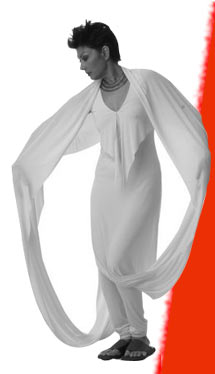In a short speech after the announcements of the results of the recently held City Lights Short Film Competition, jury member and film director Anusha Rizvi made a telling comment. “ All the films we have seen here have only one reference point – either directly or indirectly their reference point is the violence of 2002. Your city is 600 years old yet today it is defined by just one awful carnage. Where are the other stories?” she asked.
In fact there are hardly any stories of the city and her people that we tell. Do we think of them? Do we think of them as fodder for creative endeavours? Hardly. And yet there are stories everywhere.
Many years ago next to my publishing office, in a middle class home was a child with cerebral palsy. He used to study in a school down the road and an elderly woman used to push him there in a make shift chair on wheels. The years passed and the child got bigger and heavier and the woman older. Then came a day when I no longer saw the old woman and didn’t notice the young man go anywhere. Years passed. I moved out of that office. One morning she was at my door. “Kem chho Bubbliben?’” I asked. Tears started pouring down her cheeks. She was surprised that I remembered her name and recognized her at once. The child grew up and she lost her job. She moved in with her daughter, newly widowed, and her two tiny tots. Two years later the daughter died in a road accident. Bubbliben was left to look after the children. But she was already infirm. One child got sick. There was no money for medicines. She died. Bubbliben used to drag herself to work at homes, washing the floor as best as she could. Now she could hardly walk. The surviving child, now ten, went to a municipal school. She needed grains and clothes, and money for the books for school.
There was Phiroza at the Income Tax Circle on Ashram Road. I must have first met her about ten years ago when she was about ten. She used to beg there and I would pass her everyday. I started waving and smiling at her. She started waiting for me. I would roll down my window and chat. Soon another sister, a look alike, joined her and then a brother. The brother was dumb. As Navratri approached they all wanted new clothes. I took them to Law garden. The years passed and more family members with a strong resemblance joined her. One summer I couldn’t find any of them and I feared some harm had come to them. I was relieved to see them in early July. “Where did you disappear to?” I asked. “Ghar gaye the, Rajasthan, chhutti manane” came the pert reply. Followed by a shy, “Meri shaadi hone wali hai”. I wanted to know what her would be husband did.”Yahi karta hai, lekin Jaipur me”. They asked me where I was going. I said I was taking my daughter for an x ray. Can we come, they wanted to know. Sure get in, I said, but it might take some time. Outside Dr Narendra Patel’s X Ray House was a pakodiwala. Are you hungry? I asked them. They nodded eagerly. I requested the pakodiwala to give them as much as they could eat. When I emerged half an hour later they were sprawled on the car’s hood. “Bahot pet bhargaya. Ab to hume ghar chhod do”. I drove them to the slum opposite Gandhi Ashram. A few months ago Phiroza turned up at Darpana with her new baby, all glowing and shining. Her family meanwhile continues keeping me company at the Income tax Char Rasta.
There is Bhanabhai and his wife from a village just outside Ahmedabad. They first approached me during the time of my election campaign. They had lost their savings in the crash of one of the sahakari banks and got only a portion of it back. For the full amount the petty official wanted a bribe. They refused to pay. They spent months trying to find justice. They filed a case. Lawyers fees started mounting. In vain. Over the last year they visit me, not because I can help them, but because they feel I will understand their fight for justice, there abhorrence of taking any other path.
There are millions of stories all around us. Many that can be turned into art. All they need is for us to keep our eyes and ears and hearts open.
December 19th, 2010, DNA

